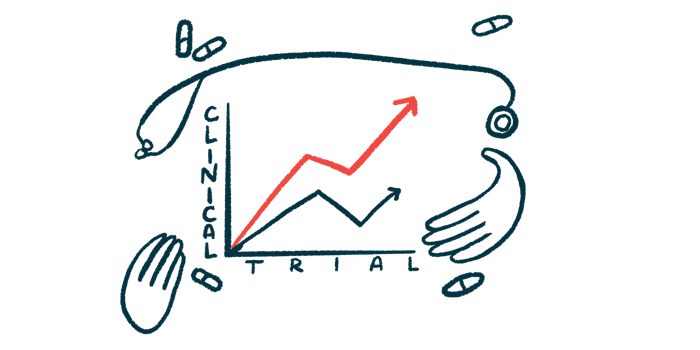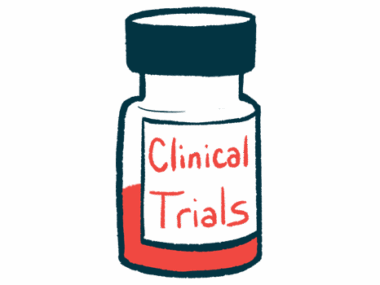Efgartigimod in Phase 3 testing for Sjogren’s as data show promise
Proof-of-concept data highlight precision therapy potential, company says
Written by |

Efgartigimod is entering a Phase 3 clinical trial after data from a proof-of-concept Phase 2 trial showed it outperformed a placebo at easing symptoms and signs of primary Sjögren’s disease, the treatment’s developer said.
Argenx shared the data at the European Congress of Rheumatology (EULAR) 2025, held June 11-14 in Barcelona, in a presentation, “Treatment of primary Sjögren’s disease by blocking FcRn: clinical and translational data from RHO, a phase 2 randomized, placebo controlled, double-blind, proof-of-concept study with efgartigimod.”
“The data presented at EULAR highlight efgartigimod’s potential as a precision therapy for patients living with … Sjogren’s disease, and we are hopeful this novel treatment will offer a new therapeutic option and lead to improved outcomes for patients,” Luc Truyen, MD, PhD, chief medical officer of Argenx, said in a company press release.
Argenx is sponsoring the Phase 3 clinical trial called UNITY (NCT06684847), which is designed to test efgartigimod against a placebo in more than 500 adults with primary Sjögren’s disease. The study’s main goal is to assess the impact of treatment on a measure of disease activity called the clinESSDAI. After the yearlong placebo-controlled part of the trial, participants will have the option to continue into an open-label extension in which all will be treated with efgartigimod. The trial is currently enrolling participants at sites worldwide.
Sjögren’s disease is an autoimmune disorder that is usually characterized by inflammation in the salivary glands and/or tear ducts. Primary Sjögren’s refers to the disease developing on its own, rather than as a complication of another health disorder.
Fighting antibodies by blocking receptors
Although the causes of Sjögren’s are not fully understood, the disease is thought to involve antibodies that erroneously target the body’s own healthy tissues. The antibodies most commonly associated with Sjögren’s are anti-Ro and anti-La, though there are others.
Efgartigimod works by blocking the activity of neonatal Fc receptor (FcRn), a protein that normally helps to stabilize antibodies in the bloodstream. By blocking FcRn, efgartigimod aims to speed the destruction of antibodies, which is expected to help ease Sjögren’s by reducing levels of disease-driving antibodies.
The formulation of efgartigimod being tested for Sjögren’s is administered subcutaneously (under the skin) and is approved under the brand name Vyvgart Hytrulo to treat myasthenia gravis, another autoimmune disease driven by self-targeting antibodies.
Argenx sponsored a Phase 2 study called RHO (NCT05817669), which tested efgartigimod against a placebo in 31 adults with primary Sjögren’s disease. The main outcome measure in of the proof-of-concept RHO study was the Composite of Relevant Endpoints for Sjögren’s Syndrome (CRESS), a composite score that looks at five measurements: clinESSDAI, patient-reported symptom severity, assessments of tear duct and salivary gland function, and levels of disease-related blood proteins. The study aimed to show that more patients given efgartigimod than placebo would improve on at least three of the five CRESS measures after 24 weeks (approximately six months) of treatment.
The RHO study met this goal. After six months, 10 out of 22 (45.5%) patients given efgartigimod improved on at least three CRESS measures, compared with one out of nine (11.1%) patients given the placebo.
Across all of the CRESS measures except patient-reported symptoms, average scores improved by more with efgartigimod than with the placebo. Average patient-reported symptom scores showed similar changes in both groups. ClinESSDAI scores tended to improve substantially in both groups, but the median improvement was markedly larger with efgartigimod than with the placebo.
Another composite measure of disease activity, the cSTAR, likewise showed higher rates of response with efgartigimod than with the placebo (54.5% vs. 33.3%), and biomarker data indicated that efgartigimod treatment reduced levels of self-targeting antibodies including anti-Ro.
Safety data from the RHO study did not reveal any unexpected findings. Known common side effects of efgartigimod include headache and infections.
“Proof-of-concept was demonstrated using efgartigimod in patients with [primary Sjögren’s disease], which was generally well tolerated,” the researchers wrote.






